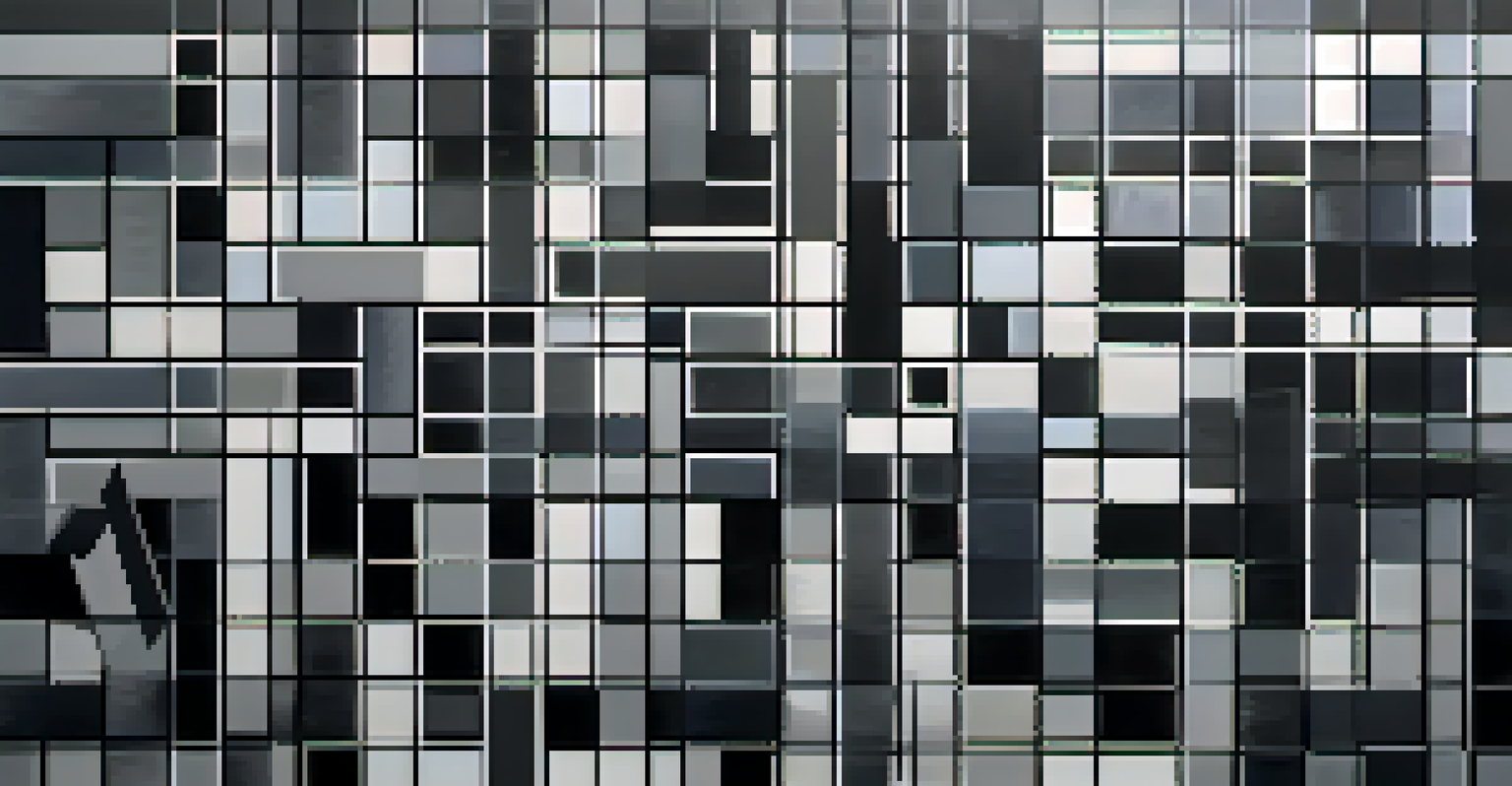Exploring the Roots of Minimalism in Contemporary Art

Understanding Minimalism: A Brief Overview
Minimalism emerged in the late 1950s as a reaction against the complexity of abstract expressionism. At its core, minimalism champions simplicity, focusing on the essence of art rather than decorative elements. Artists stripped away non-essential forms, colors, and textures to create works that invite viewers to engage with the materials themselves.
Simplicity is the ultimate sophistication.
This artistic movement encourages a deeper appreciation for the relationship between objects and their environments. By minimizing distractions, minimalism allows us to connect with the fundamental aspects of art. It’s like clearing clutter from a room to appreciate the beauty of a single, well-placed piece of furniture.
Today, minimalism isn't just an art style; it’s a lifestyle choice for many. Its influence can be seen in various fields, from design to music, emphasizing the power of 'less is more' in creating impactful experiences.
Historical Context: Roots of Minimalism
To understand contemporary minimalism, we must look back to its origins in the mid-20th century. Artists like Donald Judd and Agnes Martin sought to distill art to its most basic elements, often utilizing industrial materials. This shift marked a significant departure from previous artistic movements, emphasizing concept over craft.

Minimalism also drew inspiration from Eastern philosophies, particularly Zen Buddhism, which values simplicity and mindfulness. This philosophical underpinning encourages artists and viewers alike to consider the ‘space’ around an artwork, fostering a meditative experience.
Minimalism: Art and Lifestyle Unite
Minimalism transcends art, emerging as a lifestyle choice that emphasizes simplicity and clarity across various fields.
As the art world evolved, minimalism challenged traditional notions of what art could be. It opened the door for new forms of expression, paving the way for various contemporary movements that still embrace the principles of simplicity and clarity.
Key Characteristics of Minimalist Art
Minimalist art is characterized by its use of geometric shapes, monochromatic color palettes, and an emphasis on materials. Artists often focus on industrial elements, such as metal, glass, and concrete, to create their pieces. This choice highlights the raw beauty of the materials themselves, much like nature showcases its elements in their simplest forms.
The more you know, the less you need.
Another hallmark of minimalism is the idea of repetition and seriality. Artists like Frank Stella employed repeated patterns and forms, encouraging viewers to engage with the artwork over time. This repetition can create a sense of rhythm, drawing parallels to music where simplicity often leads to profound emotional connection.
Lastly, minimalism often invites the viewer into a participatory role. By stripping away the excess, the audience is encouraged to reflect on their own perceptions, making the experience of engaging with art more personal and introspective.
Influential Minimalist Artists to Know
Several artists have significantly shaped the minimalist movement, each bringing a unique perspective to the table. Donald Judd, for instance, is renowned for his box-like structures that challenge the very definition of sculpture. His work emphasizes the physical space around the artwork, transforming how we view our surroundings.
Agnes Martin is another pivotal figure, known for her serene, grid-based paintings that evoke tranquility. Her subtle use of color and texture invites viewers to slow down and reflect, embodying the meditative aspect of minimalism.
Key Minimalist Artists to Know
Influential artists like Donald Judd and Agnes Martin have shaped the minimalist movement, each contributing unique perspectives that redefine art's essence.
Don’t forget about Dan Flavin, whose use of fluorescent light installations redefined the boundaries of sculpture. By incorporating light as a material, he created immersive environments that interact with architecture, showcasing how minimalism can alter our experience of space.
Minimalism's Impact on Contemporary Art Practices
Today, minimalism continues to influence a wide range of contemporary art practices. Artists are increasingly drawn to the aesthetic of simplicity, often merging minimalism with other styles to create hybrid forms. This blending of influences can be seen in installations, digital art, and even performance art, where the focus remains on essential elements.
Moreover, minimalism’s emphasis on sustainability resonates with the current global focus on environmental issues. Many contemporary artists are using recycled and eco-friendly materials to create minimalist works, marrying aesthetics with ethics.
This ongoing evolution illustrates how minimalism serves as both a foundation and a springboard for new artistic expressions. Its principles remain relevant, encouraging artists to explore the intersection of simplicity and complexity in innovative ways.
The Role of Technology in Modern Minimalist Art
Technology has played a transformative role in the evolution of minimalism in contemporary art. Digital tools allow artists to create minimalist works that can be experienced in various mediums, such as video installations and virtual reality. This technological integration broadens the audience's engagement, making minimalist art more accessible than ever.
For instance, artists like Rafael Lozano-Hemmer utilize technology to create interactive installations that challenge viewers to participate actively. These works often strip away the typical barriers between art and audience, fostering a dialogue that embodies minimalist principles.
Technology Transforms Minimalism
Modern technology enhances minimalist art, allowing for interactive experiences and broader audience engagement through digital mediums.
Additionally, social media platforms have become new canvases for minimalist art, where simplicity in design captures attention. The clean aesthetics of platforms like Instagram allow artists to share their work in a digestible format, reinforcing the idea that minimalist art thrives in a world that often feels overwhelming.
The Future of Minimalism in Art and Culture
As we look to the future, minimalism's influence in art and culture is likely to persist. In a world increasingly filled with noise and visual clutter, the desire for simplicity and clarity will only grow stronger. Artists will continue to explore the balance between minimalism and other artistic expressions, creating dynamic dialogues that challenge viewers’ perceptions.
Furthermore, the rise of mindfulness and wellness movements aligns closely with minimalist principles. Many people seek simplicity in their lives, leading to a resurgence of interest in minimalist aesthetics across various domains, from interior design to fashion.

Ultimately, minimalism invites us to reflect on our relationship with art and the world around us. As artists push boundaries and redefine simplicity, we can expect to see innovative approaches that honor the roots of minimalism while embracing contemporary issues and ideas.